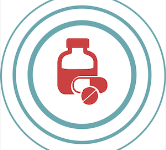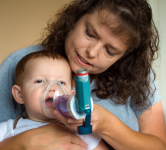2 hours
Defining MR SID
Impaired driving occurs when your body or emotions have been affected (usually temporarily) in a way that makes it unsafe for you to drive. Substances covers medicines (prescribed, pharmacy-only or over-the-counter medications and traditional remedies), illegal drugs, recreational substances (including Kava) and alcohol. It is illegal to drive when impaired by a medication even if it is being taken in accordance with the prescription due to the risk of causing death or serious injury (Section 8 of the Land Transport Act 1998).9
If police suspect a person of SID, they are able to administer a compulsory impairment test that involves checking eyes (pupil size and reactivity, convergence, tracking and the presence of nystagmus), coordination and balance. The test also assesses ability to follow instructions and maintain attention to the task.10 Roadside saliva testing is likely to be introduced in the forthcoming drug driving legislation. While this primarily tests for illegal drugs, it may include some medications.
Saliva (and likewise blood testing) to determine the presence of medication is not always possible or helpful – the presence of a medication does not mean the person was impaired for driving. If a person tests positive for the presence of a medication but is not showing signs of impairment, they will have a medical defence under Section 8 of the Land Transport Act and not be prosecuted.
It is important to understand that, if warned by a health care professional of the risk of MR SID for a medication, or there is a warning label on the medication, a person may not be covered by their insurance while driving or if in an accident. This may also affect a person’s ability to gain insurance or employment in the future. For health professionals, it is essential that if a conversation warning a patient/client about the potential risk has occurred, it is documented in the person’s health record.
If a person uses a vehicle as part of their job, their employer has an obligation to identify and act where an employee could be at risk of MR SID at the time of driving.11 Employees must discuss medication use with their employers if there is a known risk of MR SID and if their role involves driving or operating machinery.
Healthcare professionals, including nurse practitioners and prescribers, nurses working under standing orders and those supplying medications, are required to inform Waka Kotahi if they believe a person is a danger to themselves or others on the road and that despite advice, they believe the person is likely to continue to drive.12 If there is an immediate risk that someone is about to drive when not safe to do so, the police should be contacted via 111.
The health professional bears a legal and ethical responsibility to prioritise safety of other road users and the individual concerned. In determining fitness to drive, a prescriber should consider:
- If the person is particularly vulnerable to the medication (due to other health conditions, age, etc.)
- The cumulative effect, including pharmacological interactions, if the person is taking multiple medications (including over the counter, traditional and herbal remedies)
- Risk of alcohol or illicit drugs being used at the same time





